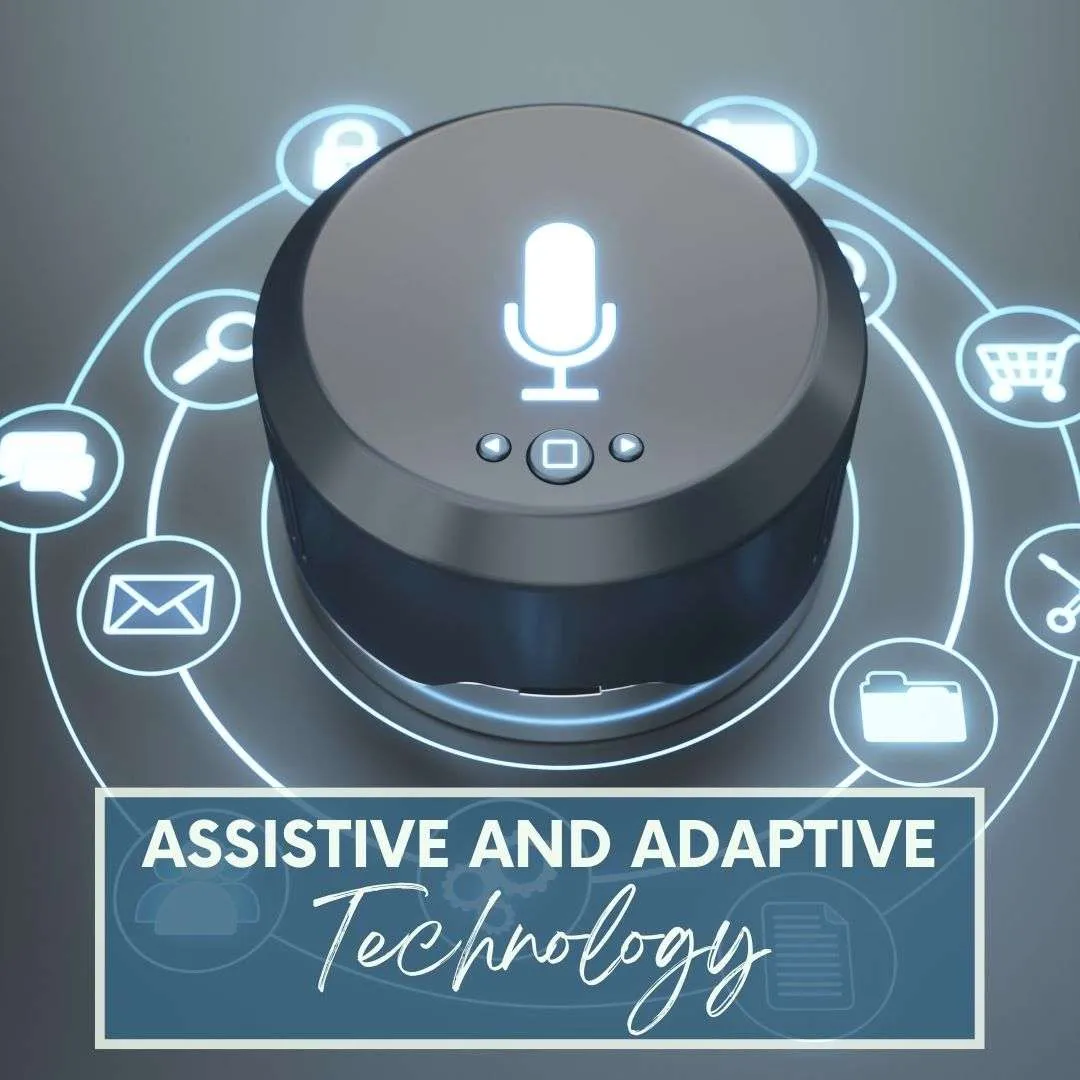The differences between assistive and adaptive technology is subtle, but can be very important when you are searching for devices, tools, or technology to help your individual case. So, here is a bit of insight about the distinctions concerning assistive technology and adaptive equipment.
Assistive Technology
According to the Assistive Technology Industry Association, Assistive Technology (AT) is “any item, piece of equipment, software program, or product system that is used to increase, maintain, or improve the functional capabilities of persons with disabilities.”
AT can be low-tech, communication boards made of cardboard and fuzzy felt, or high-tech. For example, a special purpose computer.
The Adaptive Computing Technology (ACT) Center at the University of Missouri offers a slightly different perspective. They consider assistive technology to be a part of adaptive technology.
Assistive technology refers to “any light-, mid-, or high-tech tool or device that helps people with disabilities perform tasks with greater ease and/or independence.” Examples include joysticks, braille embossers, screen-readers, trackballs, sip-and-puff systems, etc.
In these fine distinctions, you see that adaptive technology refers to the ability to accomplish a task. Assistive technology refers to the ease with which a task is performed.
Adaptive Technology
The ACT Center specifically defines adaptive technology as “special versions of already existing technologies or tools that provide enhancements or different ways of interacting with technology. The adaptation helps people with a disability or impairment accomplish a specific task.”
Examples of adaptive technology include large print books, computers with voice input, software to adjust screen colors, and adjustable tables. It can also include simple devices that make everyday tasks easier. For example, senior-friendly TV headphones or simple TV remotes for seniors.
Uses of Assistive and Adaptive Technology
Adaptive and Assistive technology are used to improve the quality of life for persons living with disabilities or limitations and help them function in the best possible way to maintain their independence. These goals are certainly relevant when we consider keeping older adults comfortable in their homes as they age.
Mobility is generally a core component. Walkers, rollators, and canes are magnificent aids for mobility. Wheelchairs are an added device to facilitate movement.
Linguistic (i.e. speech) applications can be identified with the use of voice-controlled wheelchairs. In this case, speech recognition software can respond to commands like left, right, run, and stop. Moreover, the movement of the wheelchair is prompted by voice control instead of self-propelled wheelchairs that use physical force or even the electric wheelchairs that use hand dexterity to move a joystick control.
An added layer for more independent living in the home is using linguistics technology and social development interaction for shopping and monitoring devices like “Alexa” and “Echo” by Amazon.
The voice control features of Alexa can help individuals regulate the smart items in their home to activate and deactivate security systems; turn lights on or off; listen to music; or shop for groceries and needed items.
Tons of valuable information is at your fingertips with the use of one extraordinary technological tool: the internet. Once you access it, a wealth of data is available. Learn more about mobility aids and assistive technologies with this tool. These websites offer a wide array of information about technological equipment for elderly daily living, leisure, travel, and safety.
Learn more about assistive and adaptive technology for your home, aka the “smart home”.
The Future is Bright
Technology, with disability in mind, has created smart devices that offer image recognition for the visually impaired; lip-reading recognition for people with hearing impairment; text summary for persons with cognitive/mental disabilities; enhanced body prosthetics for the replacement of hearts, hands, legs, and so much more.
Yes, our world is changing at an incredible pace. Applied sciences continue to create more opportunities for inclusivity, independence, and problem-solving. Growing older and living comfortably can be a realistic goal for mature adults.
If aging presents a mobility challenge, rest assured the ideals of growing older and living comfortably are accessible. The vision of a slower, stress-free lifestyle is more concrete, and creating the lifestyle is easier with adaptive technology.




